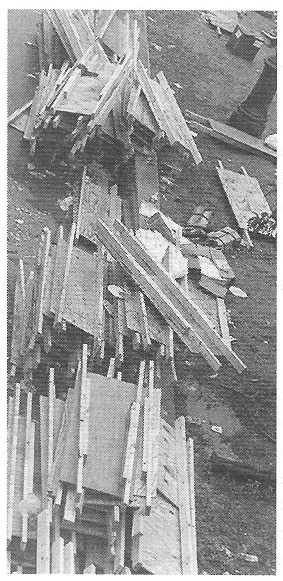We find ourselves in a time of great uncertainty: an international pandemic is spreading and while there is some testing, there is not yet a cure. We’re being asked to distance ourselves socially and take extreme precautions. We have to come together by staying apart, and in addition to the larger issues of healthcare, treatment, and financial security, many of us are grappling with isolation and intense loneliness. We are living in a strange liminality, caught between different emotions and modes of thinking and absolutely fraught with uncertainty and ambiguity. John Keats first used the term “negative capability” to recognize art that does not yield a quick philosophical “answer” but rather exists within uncertainty, mystery, or even doubt. A great thinker is “capable of being in uncertainties, Mysteries, doubts, without any irritable reaching after fact and reason” (from the Poetry Foundation).
A lyricized account of uncertainty, Claudia Rankine’s book-length poem Don’t Let Me Be Lonely proves just how much emotional resonance exists in ambiguity. Our speaker is distinctly aware of the distance between herself and others; she resists creating a sense of shared experience and is never sure if her observations or thoughts are correct or accurate. This sense of doubt is inherently connected to time and place: this poem takes place in New York City, very shortly after the terrorist attacks of September 11, 2001, a life-changing event to which many of us are comparing current events. As within the aftermath of 9/11, we are experiencing a shifting world. So much has drastically changed, and we, like Rankine’s speaker, are trying to adapt, knowing that though there will be a new normal, eventually. Nothing will ever be the same; nothing can be clearly defined.
Throughout the poem, Rankine resists definition and certainty. In line with Keats, Rankine’s work is capable of existing in ambiguity and doubt, yet the beauty for which she strives is a sense of hope. Early in the poem, she quotes Cornel West, who “makes the point that hope is different from American optimism” (21). Syntactically and tonally, Rankine neither agrees nor disagrees with West’s assessment, though it is clear that she interested in the space between “hope” and “optimism.” Along with quoting others, our speaker shapes her understanding of the world through photographs. Published within the text, these images create a mediated experience of trauma at the intersection of hope and aloneness.


photograph by John Lucas
This image feels imbued with a new sense of symbolism now. In two blocks of prose around the photograph, Rankine describes Manhattan three days after 9/11: “it rains. It rains through the night” (82). In one of several admissions of ignorance, our speaker admits she thought the rain would “clear the air of smoke” but in fact, “the debris is still burning” in the dim, overcast light (82). She describes the scene as a sort of purgatory; an illusory space in which it is neither day or night; flaming or dampened.
The ambiguity of the situation is reflected in Rankine’s speaker’s body as her eyes both “burn and tear” (82). She draws our attention to her eyes to heighten the sensory power of sight, describing then the photograph included in this moment of the lyric: “Stacked up along the high-way are the wooden stretchers that were never needed” (82). This image depicts a moment of hope; somewhere in the timespan between the towers falling and this moment—three days later—citizens of the city were able to maintain an idea of progress and attempted to move toward a search-and-rescue operation.
In this way, Don’t Let Me Be Lonely is a lyric reflective of negative capability; not in its absence of kinetic energy but in that it dwells forever in uncertainty. It represents the optimism of the past (workers used their skills and materials at hand to build stretchers, working under the assumption that there would be survivors), the present moment of uncertainty, and the future’s complete absence of hope.
To lyricize her experience, Rankine depends on both text and image. Through such collage, Rankine echoes Keats’s notion that art is capable of combining contrary states of being. On these particular pages of Don’t Let Me Be Lonely, we see our speaker simultaneously experience two opposite states of being: she seems both awake and asleep, alive and dead, isolated and part of a crowd. To be physically present in post-9/11 New York City is to both exist and not exist.
Such emotions may be shared by a community, but the question of identity powers Rankine’s lyric. As the Covid-19 pandemic unfolds, we’re becoming increasingly more aware of how disaster impacts different communities in different ways; forcing us to question who is most vulnerable. Who needs the most help. As a Black woman in New York City, the speaker of Don’t Let Me Be Lonely struggles against racism, deepening the isolation she feels in the post-9/11 world.
Don’t Let Me Be Lonely occupies the liminal space between hope and whatever is opposite hope, though Rankine never names this opposite. We can call it despair, desolation, or isolation, but she does not suggest a philosophical definite. The combination of image and text work together to create a liminal rather than definitive space, and within this ambiguity we sense despair, yes, but it is also a place where hope can take some small root.
We are reminded that we are capable of surviving through uncertainty, mystery, and even doubt.
Stacey Balkun is the author of Eppur Si Muove, Jackalope-Girl Learns to Speak & Lost City Museum. Winner of the 2017 Women's National Book Association Poetry Prize, her work has appeared in Best New Poets, Crab Orchard Review, The Rumpus, and other anthologies & journals. Chapbook Series Editor for Sundress Publications, Stacey holds an MFA from Fresno State and teaches poetry online at The Poetry Barn & The Loft. Find her online at http://www.staceybalkun.com/

